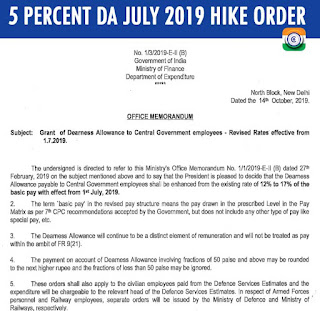Hike contribution to raise minimum pension: EPFO to Government
Retirement fund body EPFO has made a case for increase in Government’s contribution to its pension scheme EPS-95 to 1.79 per cent of basic wages from existing 1.16 per cent for ensuring Rs 1,000 per month to pensioners.
“…it is believed that there is a strong case for increasing the government’s contribution from 1.16 per cent to 1.79 per cent to the EPS—95 (Employees Pension Scheme—1995) fund to support a minimum pension of Rs 1,000 per month for all categories of EPF-95 pensioners,” EPFO said in a letter to Labour Ministry.
According to the Employees’ Provident Fund Organisation’s (EPFO), additional contribution of 0.63 per cent of workers’ basic wages to EPS—95 is required to pay minimum pension of Rs 1,000 per month to all categories of pensioners.
Now, the Labour Ministry would have to take up the issue with Finance Ministry for the purpose.
In the present scenario, Central Government contributes 1.16 per cent of workers’ basic wages (basic pay plus dearness allowance), towards EPS—95 fund. During 2012-13, government contributed around Rs 1,900 crore towards the EPS-95 fund which also includes some arrears.
The official estimates indicate that if the Central Government decides to increase its contribution to 1.79 per cent of the workers’ basic wages, then they would have to pay additional amount of Rs 750 crore to Rs 800 crore during this fiscal. This additional contribution would further increase to Rs 1,400 crore by 2018-19.
However, EPFO is batting for increase in the government’s contribution as neither the workers nor employers want to pay the additional 0.63 per cent of workers’ basic wages to ensure minimum pension of Rs 1,000 per month under the scheme.
The hike in contribution will be over-and-above the 8.33 per cent contributed by employers toward the pension account of employees, as well as the 1.16 per cent provided by the government under the scheme.
According to EPFO data, as of March 31, 2010, there were 35 lakh pensioners subscribed to the retirement fund body, of which 14 lakh persons get a monthly pension of less than Rs 500.
The number of EPFO pensioners getting a monthly pension of Rs 1,000 is 7 lakh. The data revealed there were cases where pensioners are getting a monthly pension as low as Rs 12 and Rs 38.
Source: Business Line via CGN
Retirement fund body EPFO has made a case for increase in Government’s contribution to its pension scheme EPS-95 to 1.79 per cent of basic wages from existing 1.16 per cent for ensuring Rs 1,000 per month to pensioners.
“…it is believed that there is a strong case for increasing the government’s contribution from 1.16 per cent to 1.79 per cent to the EPS—95 (Employees Pension Scheme—1995) fund to support a minimum pension of Rs 1,000 per month for all categories of EPF-95 pensioners,” EPFO said in a letter to Labour Ministry.
According to the Employees’ Provident Fund Organisation’s (EPFO), additional contribution of 0.63 per cent of workers’ basic wages to EPS—95 is required to pay minimum pension of Rs 1,000 per month to all categories of pensioners.
Now, the Labour Ministry would have to take up the issue with Finance Ministry for the purpose.
In the present scenario, Central Government contributes 1.16 per cent of workers’ basic wages (basic pay plus dearness allowance), towards EPS—95 fund. During 2012-13, government contributed around Rs 1,900 crore towards the EPS-95 fund which also includes some arrears.
The official estimates indicate that if the Central Government decides to increase its contribution to 1.79 per cent of the workers’ basic wages, then they would have to pay additional amount of Rs 750 crore to Rs 800 crore during this fiscal. This additional contribution would further increase to Rs 1,400 crore by 2018-19.
However, EPFO is batting for increase in the government’s contribution as neither the workers nor employers want to pay the additional 0.63 per cent of workers’ basic wages to ensure minimum pension of Rs 1,000 per month under the scheme.
The hike in contribution will be over-and-above the 8.33 per cent contributed by employers toward the pension account of employees, as well as the 1.16 per cent provided by the government under the scheme.
According to EPFO data, as of March 31, 2010, there were 35 lakh pensioners subscribed to the retirement fund body, of which 14 lakh persons get a monthly pension of less than Rs 500.
The number of EPFO pensioners getting a monthly pension of Rs 1,000 is 7 lakh. The data revealed there were cases where pensioners are getting a monthly pension as low as Rs 12 and Rs 38.
Source: Business Line via CGN










